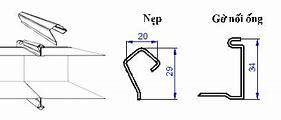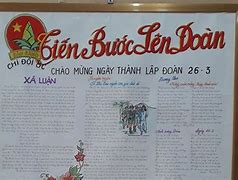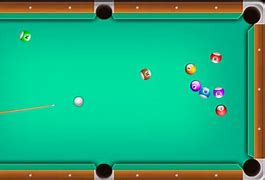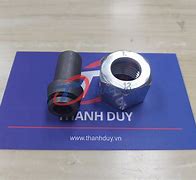
Đề Cương Môn Luật Thương Mại 1
%PDF-1.5 %µµµµ 1 0 obj <>/Metadata 757 0 R/ViewerPreferences 758 0 R>> endobj 2 0 obj <> endobj 3 0 obj <>/ExtGState<>/ProcSet[/PDF/Text/ImageB/ImageC/ImageI] >>/MediaBox[ 0 0 595.32 841.92] /Contents 4 0 R/Group<>/Tabs/S/StructParents 0>> endobj 4 0 obj <> stream xœ½YÛnã6}7àࣳ¨rx±“ÍÞ’f»îö¡èCQì}h€¶@û{ý‰þOÏH²cË¢%ÛtÄŠbRsæÌáÌ�—�âêêò~ñöF¨Ë???‰É_¿N??\Ìfb~³¿�GJ*þ‰1h¡„KNÑj™Hüñe<úá•x�æËñèòµšÄòëxÄC•ÐÂyéÁJÅò7Œ¹ûÄÓŸx¬xªîbsw7ý8?‰å»ñèOû8‰Ûû…õ1z%}�±‚¶Ñ`ƒØq"¤ˆÿð䯯Ø@pâïf¼ûf|â 1 %-Y|*Ã8ØJ”ZE2f)™ ÒÚÊÊFç¥Á0-b�)Ú O6Ý0M¾•}©‡ä�PøKR;á¿®ˆÚ��½#(%TÝ}#,í±ª»ÕH�¡AêX Eú°IFÊ_½‘¿‡Í®¹âÐæÚ"òÎF´ i‡kÚ溄½d«ù]öªU¨X%X†üUܺÃüH9o‡(+¬•åK+ƒOƒ§¥e4U°êsÂ`qw·ZF;B=.bœæ»LÄãÞþ¦çI+>L+’ðXmÖjz· ¥Ó!�+Ó ‰,Ï:©Ó!ù6$Ÿ¤‚ºœ�Ò›ÚrS}Ë!¹ûnÝt(»°Ü�ÍÚú=ˆ&dÅC€ ¼s{Šßkî wûÂà …6 B~Æd( vøN¤ƒ°eæ:PÕÕ�ª©à›\t"-�†�¥eWÕºˆª[% U’É ÒkUÏU½ïaöøÊÖ›Méj%²æ{µj»ë{ô§±Ü™¼†:ÑÏ2•HgøMFN«FàÐöŽöﳡŠ¨·e çQºÒ0 `ƒÉñw„«mÿáuzæ¯T#�z uØ…éé i§]<™æ� )õôÒDFÇÇ*1qÁOHyüĺÁkj}Õàm•úÆ Xæ³£6Žb,}D�›�Y–“š¹!z1UO«-µgåº\#UhÎ|ßw7"^úªE70™ë9ÉïUbîuÄöpíˆüðÉŽÓž÷Sòaò†/~ò-.ÁN®3å£ÏtÚ.ç¨Öfìæ*ÔáÞ(7æÌ4î½e¿ôä¡öòM÷´rUƒ|f÷´æc—n+Ë£¬hÕi&Víz—�+$Ê””SºMk±¬&´îrÇXÞ¶tÙá•«mÏçŽ5ØrÊQµ±;»SØ‹eb$H¦T9õáû£š.{Áó©@Nsu¬&:LEÏ)·¤Ì;ǧŒ™oŠ¤m>ß9wZ dŸè2fë¬'ë¬GõEÕS_ 9ëÐüÎ:ÇÇ9¹Õ¬+á§PÆ%Ô�K¸]ÂÚÒÝ‚çµìëõo—Xõ9™Ÿ¨Ã'ô©¹Õµö‰Ö„�;UïPJxg(p?zî€CèÏ_ˆ�ÕÒd‚ůWrGxä4o”ráª�Ê$ ƒf0c«h�¸Ìå#Ί!®²¢/™MÂÞøüyÐ*Ë[ðn3ëÞ]®Ò|1£¥Ït†…è³Üî »”å]¦Qk^abPí©ñWPøKßIRÖ£E<¿>
%PDF-1.5 %µµµµ 1 0 obj <>/Metadata 757 0 R/ViewerPreferences 758 0 R>> endobj 2 0 obj <> endobj 3 0 obj <>/ExtGState<>/ProcSet[/PDF/Text/ImageB/ImageC/ImageI] >>/MediaBox[ 0 0 595.32 841.92] /Contents 4 0 R/Group<>/Tabs/S/StructParents 0>> endobj 4 0 obj <> stream xœ½YÛnã6}7àࣳ¨rx±“ÍÞ’f»îö¡èCQì}h€¶@û{ý‰þOÏH²cË¢%ÛtÄŠbRsæÌáÌ�—�âêêò~ñöF¨Ë???‰É_¿N??\Ìfb~³¿�GJ*þ‰1h¡„KNÑj™Hüñe<úá•x�æËñèòµšÄòëxÄC•ÐÂyéÁJÅò7Œ¹ûÄÓŸx¬xªîbsw7ý8?‰å»ñèOû8‰Ûû…õ1z%}�±‚¶Ñ`ƒØq"¤ˆÿð䯯Ø@pâïf¼ûf|â 1 %-Y|*Ã8ØJ”ZE2f)™ ÒÚÊÊFç¥Á0-b�)Ú O6Ý0M¾•}©‡ä�PøKR;á¿®ˆÚ��½#(%TÝ}#,í±ª»ÕH�¡AêX Eú°IFÊ_½‘¿‡Í®¹âÐæÚ"òÎF´ i‡kÚ溄½d«ù]öªU¨X%X†üUܺÃüH9o‡(+¬•åK+ƒOƒ§¥e4U°êsÂ`qw·ZF;B=.bœæ»LÄãÞþ¦çI+>L+’ðXmÖjz· ¥Ó!�+Ó ‰,Ï:©Ó!ù6$Ÿ¤‚ºœ�Ò›ÚrS}Ë!¹ûnÝt(»°Ü�ÍÚú=ˆ&dÅC€ ¼s{Šßkî wûÂà …6 B~Æd( vøN¤ƒ°eæ:PÕÕ�ª©à›\t"-�†�¥eWÕºˆª[% U’É ÒkUÏU½ïaöøÊÖ›Méj%²æ{µj»ë{ô§±Ü™¼†:ÑÏ2•HgøMFN«FàÐöŽöﳡŠ¨·e çQºÒ0 `ƒÉñw„«mÿáuzæ¯T#�z uØ…éé i§]<™æ� )õôÒDFÇÇ*1qÁOHyüĺÁkj}Õàm•úÆ Xæ³£6Žb,}D�›�Y–“š¹!z1UO«-µgåº\#UhÎ|ßw7"^úªE70™ë9ÉïUbîuÄöpíˆüðÉŽÓž÷Sòaò†/~ò-.ÁN®3å£ÏtÚ.ç¨Öfìæ*ÔáÞ(7æÌ4î½e¿ôä¡öòM÷´rUƒ|f÷´æc—n+Ë£¬hÕi&Víz—�+$Ê””SºMk±¬&´îrÇXÞ¶tÙá•«mÏçŽ5ØrÊQµ±;»SØ‹eb$H¦T9õáû£š.{Áó©@Nsu¬&:LEÏ)·¤Ì;ǧŒ™oŠ¤m>ß9wZ dŸè2fë¬'ë¬GõEÕS_ 9ëÐüÎ:ÇÇ9¹Õ¬+á§PÆ%Ô�K¸]ÂÚÒÝ‚çµìëõo—Xõ9™Ÿ¨Ã'ô©¹Õµö‰Ö„�;UïPJxg(p?zî€CèÏ_ˆ�ÕÒd‚ůWrGxä4o”ráª�Ê$ ƒf0c«h�¸Ìå#Ί!®²¢/™MÂÞøüyÐ*Ë[ðn3ëÞ]®Ò|1£¥Ït†…è³Üî »”å]¦Qk^abPí©ñWPøKßIRÖ£E<¿>
Đề cương học kì 1 môn Tiếng Anh 6 i-Learn Smart World
Ex 1. Choose the word whose underlined part is pronounced differently from others.
1. A. brilliant B. barbecue C. climbing D. neighbor
2. A. about B. professional C. beautiful D. butterfly
3. A. bed B. job C. pass D. bull
4. A. boy B. pocket C. pencil D. postcard
5. A. copy B. happy C. pull D. beast
6. A. airport B. speak C. notebook D. spoon
7. A. diet B. fish C. dinner D. chicken
8. A. food B. noodles C. bamboo D. flood
9. A. stand B. stamp C. steal D. tape
10. A. top B. stay C. ten D. tomato
Ex 2. Choose the word which has a different stress pattern from the others.
1. A. teacher B. student C. lecture D. engineer
2. A. apartment B. wardrobe C. kitchen D. backpack
3. A. reliable B. helpful C. active D. friendly
4. A. paper B. police C. people D. purpose
5. A. confident B. talkative C. friendly D. creative
6. A. remove B. repeat C. effort D. prefer
7. A. contain B. achieve C. improve D. enter
8. A. exist B. notice C. avoid D. support
9. A. decide B. combine C. apply D. happen
10. A. mother B. behave C. money D. pizza
Ex 3. Give the correct form of the verbs in brackets.
1. Our teacher, Mrs Jones, __________________ (never / be) late for lessons.
2. We are all very excited about going away tomorrow. The taxi (arrive) _________________ at 7 a.m. to take us to the airport.
3. I __________________ (sometimes / be) bored in math lessons.
4. The school bus __________________ (always / arrive) at half past eight.
5. I want to go and see the exhibition at the National and Portrait Gallery. It (start) _______________ tomorrow morning.
6. He (go) _________________ to the hospital again tonight.
7. My mother (never / buy) ________________ fast food and she (usually / eat) ________________ healthy food.
8. (you/ use) _________________ your motorbike tonight? I want to borrow it.
9. I can’t see you tonight, Jane. I (go) _________________ to the theater with Mike.
10. They (always / do) __________________ their homework before going to school.
Ex 4. Fill each blank with a word/phrase in the box.
1. Which _____________ do you often play at the weekends?
2. My brother plays soccer _____________ a week. He does it on Saturday and Sunday.
3. How often do you go _____________? - Every morning.
4. My friend loves to swim. He goes _____________ every Sunday.
5. What do you like _____________ in your free time?
6. I like to watch motor _____________ on TV. It’s really exciting.
7. Why does your brother like going to the _____________? - Because it is great.
8. Last weekend I played _____________ with Mai and we had a very good time.
9. Many girls in my class like doing _____________ to keep fit.
10. In Vietnam, we play different _____________ during the break time.
Ex 1. Choose the word whose underlined part is pronounced differently from others.
1. A. brilliant B. barbecue C. climbing D. neighbor
2. A. about B. professional C. beautiful D. butterfly
3. A. bed B. job C. pass D. bull
4. A. boy B. pocket C. pencil D. postcard
5. A. copy B. happy C. pull D. beast
6. A. airport B. speak C. notebook D. spoon
7. A. diet B. fish C. dinner D. chicken
8. A. food B. noodles C. bamboo D. flood
9. A. stand B. stamp C. steal D. tape
10. A. top B. stay C. ten D. tomato
Ex 2. Choose the word which has a different stress pattern from the others.
1. A. ‘teacher B. ‘student C. ‘lecture D. engi’neer
2. A. a’partment B. ‘wardrobe C. ‘kitchen D. ‘backpack
3. A. re’liable B. ‘helpful C. ‘active D. ‘friendly
4. A. ‘paper B. po’lice C. ‘people D. ‘purpose
5. A. ‘confident B. ‘talkative C. ‘friendly D. cre’ative
6. A. re’move B. re’peat C. ‘effort D. pre’fer
7. A. con’tain B. a’chieve C. im’prove D. ‘enter
8. A. e’xist B. ‘notice C. a’void D. sup’port
9. A. de’cide B. com’bine C. ap’ply D. ‘happen
10. A. ‘mother B. be’have C. ‘money D. ‘pizza
Ex 3. Give the correct form of the verbs in brackets.
1. Our teacher, Mrs Jones, __________________ (never / be) late for lessons.
2. We are all very excited about going away tomorrow. The taxi (arrive) is arrivingat 7 a.m. to take us to the airport.
3. I __________________ (sometimes / be) bored in math lessons.
4. The school bus __________________ (always / arrive) at half past eight.
5. I want to go and see the exhibition at the National and Portrait Gallery. It (start) is starting tomorrow morning.
6. He (go) is going to the hospital again tonight.
7. My mother (never / buy) ________________fast food and she (usually / eat) ________________ healthy food.
8. (you/ use) Are you using your motorbike tonight? I want to borrow it.
9. I can’t see you tonight, Jane. I (go) am going to the theater with Mike.
10. They (always / do) __________________their homework before going to school.
Ex 4. Fill each blank with a word/phrase in the box.
1. Which sports do you often play at the weekends?
2. My brother plays soccer twice a week. He does it on Saturday and Sunday.
3. How often do you go jogging? - Every morning.
4. My friend loves to swim. He goes swimming every Sunday.
5. What do you like doing in your free time?
6.I like to watch motor racing on TV. It’s really exciting.
7. Why does your brother like going to the gym? - Because it is great.
8. Last weekend I played badminton with Mai and we had a very good time.
9. Many girls in my class like doing aerobics to keep fit.
10. In Vietnam, we play different games during the break time.
Thi thử trắc nghiệm ôn tập môn Pháp luật Đại Cương online - Đề #3
Làm bài kiểm tra trắc nghiệm Pháp luật đại cương với đề số 3. Làm quen với thời gian và áp lực như bài thi chính thức.
Thi thử trắc nghiệm ôn tập môn Pháp luật Đại Cương online - Đề #7
Bắt đầu ôn luyện với đề số 7 trong bộ đề trắc nghiệm Pháp luật đại cương. Đề bao gồm 30 câu hỏi, tự quản lý thời gian làm bài. Nộp bài và chấm điểm online.
Nội dung ôn tập học kì 1 môn Tiếng Anh 6 - Explore English
1. Possessive pronouns (Đại từ sở hữu)
- Đại từ sở hữu dùng để chỉ sự sở hữu và thay thế cho một danh từ, cụm danh từ đã được nhắc đến trước đó.
Dùng thay cho một tính từ sở hữu (possessive adjective) và một danh từ đã nói phía trước.
Ví dụ: I gave it to my friends and to yours. (= your friends) – Tôi đưa nó cho bạn của tôi và bạn của bạn
Dùng trong dạng câu sở hữu kép (double possessive).
Ví dụ: He is a friend of mine. – Anh ta là một người bạn của tôi.
Dùng ở cuối các lá thư như một quy ước. Trường hợp này người ta chỉ dùng ngôi thứ hai.
Ví dụ: Để kết thúc một bức thư, ta viết
Các đại từ sở hữu và nghĩa của chúng
2. Possessive adjectives (Tính từ sở hữu)
Khi bạn muốn nói Mẹ của tôi, bạn không thể nói I's mother hay the mother of I. Trong trường hợp này, sở hữu chủ là một đại từ nhân xưng, vì vậy chúng ta phải sử dụng một tính từ sở hữu (possessive adjective).
Các tính từ sở hữu cùng với các đại từ nhân xưng (personal pronouns) tương quan như sau:
Các tính từ sở hữu luôn đi trước danh từ mà nó sở hữu và các danh từ này không có mạo từ đi theo.
3. Possessive ‘s and s’ (Sở hữu cách)
Sở hữu cách được dùng để chỉ sự sở hữu hay một mối liên hệ giữa 2 hay nhiều đối tượng, từ đó làm rõ thêm cho đối tượng đang được nhắc đến.
Không sử dụng sở hữu cách cho sự vật, sự việc
- Ta thêm dấu lược và chữ cái “s” vào sau danh từ số ít.
John’s car is very expensive. (Xe ô tô của John rất đắt.)
- Ta chỉ thêm dấu lược vào sau danh từ số nhiều có tận cùng là “s”.
The teachers’ room is over there.(Phòng giáo viên ở đằng kia.)
- Ta thêm dấu lược và chữ cái “s” vào sau danh từ số nhiều không có tận cùng là “s”.
The shop sells children’s clothes. (Cửa hàng đó bán quần áo trẻ em.)
- Khi muốn nói nhiều người cùng sở hữu một vật hay nói cách khác là có nhiều danh từ sở hữu thì ta chỉ thêm kí hiệu sở hữu vào danh từ cuối.
4. Countable noun & Uncountable noun
- Trong Tiếng Anh có hai loại danh từ là danh từ đếm được (Countable Noun) và danh từ không đếm được (Uncountable Noun).
Danh từ không đếm được: Ví dụ: tea (trà), water (nước), sugar (đường)...
Danh từ đếm được: danh từ đếm được gồm cả danh từ số ít và danh từ số nhiều:
Danh từ số ít chỉ một người hay một vật. Danh từ số nhiều chỉ hai người hoặc hai vật trở lên.
- Cách thành lập số nhiều cho danh từ đếm được: bỏ a thêm s vào sau danh từ
+ Riêng các danh từ tận cùng là –s, -sh, -ch, -x thì ta thêm es
+ Những danh từ tận cùng là y và trước y là một phụ âm thì ta phải đổi y thành i rồi thêm es
+ Với các danh từ có tận cùng là phụ âm + o thì ta phải thêm es khi chuyển danh từ này sang số nhiều.
- Các danh từ đặc biệt khi chuyển sang số nhiều:
- Một số danh từ đếm được có chung hình thái cho cả hai dạng số ít và số nhiều
- Một số danh từ chỉ có hình thái ở số nhiều: trousers, glasses
Với thể khẳng định, có 3 nguyên tắc sử dụng cấu trúc There + be +…
Nguyên tắc 1: There is + singular noun (danh từ số ít)
Ví dụ: – There is a pen in my lovely pencil case. – There is an apple in the picnic basket.
Nguyên tắc 2: There are + plural noun (danh từ số nhiều)
– There are pens in my lovely pencil case.
– There are three apples in the picnic basket.
– There are many trees in my grandparents’ garden.
There is + uncountable noun (danh từ không đếm được)
– There is hot water in the bottle.
– There is some rice left on the plate.
* Thể phủ định: Ở thể phủ định, sau động từ to be sẽ có thêm từ not và thường có thêm từ any để nhấn mạnh sự không tồn tại của một thứ gì đó. Tương tự, cũng có 3 nguyên tắc:
Nguyên tắc 1: There is not + singular noun
– There is not any book on the shelf.
Nguyên tắc 2: There are not + plural noun
– There are not any students in the classroom right now.
Nguyên tắc 3: There is not + uncountable noun
– There is not any milk in the fridge.
Câu hỏi Yes/ No: Đối với câu hỏi Yes/No, chúng ta đặt động từ to be ra trước từ there để tạo thành câu hỏi. Từ any được dùng với câu hỏi cho danh từ số nhiều và danh từ không đếm được.
Is there a ball in the present box? Yes, there is.
Is there an eraser in your school bag? No, there is not.
Are there any students taking part in the event? Yes, there are.
Are there any pets in your family? No, there are not.
How many + plural noun (danh từ số nhiều) + are there +…?
How many brothers and sisters are there in your house?
How many oranges are there in your lunchbox?
How many fish are there in the fish tank?
There is not = There’s not = There isn’t
There are not = There’re not = There aren’t
* Tính từ ngắn & tính từ dài trong tiếng Anh 6
Tính từ ngắn trong tiếng Anh là tính từ có 1 âm tiết, hoặc 2 âm tiết nhưng chữ cái cuối cùng của âm tiết thứ hai có kết thúc là –y, –le,–ow, –er, và –et.
Tính từ dài trong tiếng Anh là tính từ có 2 âm tiết trở lên và bỏ qua các trường hợp đặc biệt 2 âm tiết trên đó.
* Dạng so sánh hơn của Tính từ ngắn/ Tính từ dài trong tiếng Anh
- Thêm đuôi ER vào tính từ để hình thành dạng so sánh hơn.
- Thêm đuôi R nếu tính từ kết thúc tận cùng bằng nguyên âm – E
- Nếu tính từ kết thúc bằng “Y” thì trong câu so sánh ta bỏ “y” để thêm -IER
- Nếu tính từ kết thúc bằng nguyên âm + phụ âm thì cần gấp đôi phụ âm đó rồi mới thêm –ER
- Nếu Tính từ/ Trạng từ kết thúc bằng ow, er thì thêm đuôi _ER
Ví dụ: Intelligent - more intelligent
Elder (về cấp bậc hơn là tuổi tác)
Cấu trúc câu so sánh hơn trong tiếng Anh
S1 + be/ V + adj_er/ more adj + than + S2 (+ be/ Aux.v)
- This book is thicker than that one.
- He is more intelligent than I am
7. Wh-questions (Câu hỏi dạng Wh-questions)
Các từ để hỏi trong Tiếng Anh thường gặp
Cách đặt câu hỏi cho từ bị gạch chân
+ Dùng động từ thường thì ta phải mượn trợ động từ và đảo trợ động từ lên trước chủ ngữ và sau từ để hỏi
+ Nếu trong câu dùng động từ “tobe”, động từ khuyết thiếu thì ta chỉ cần đảo động từ “tobe”, động từ khuyết thiếu lên trước chủ ngữ và sau từ để hỏi
- Nếu trong câu có từ bị gạch chân dùng những từ sau thì khi chuyển sang câu hỏi ta phải đổi tương ứng như sau






















